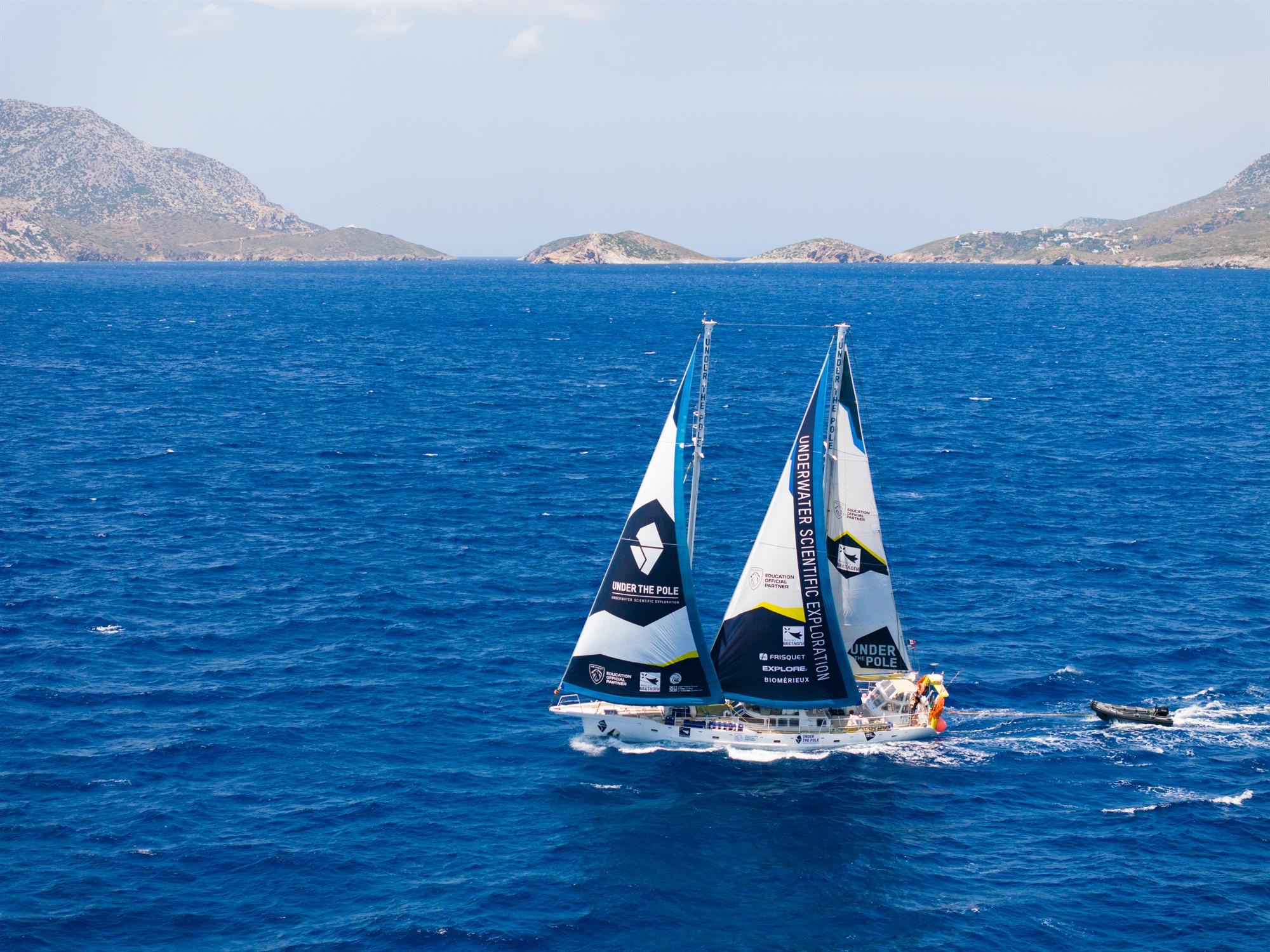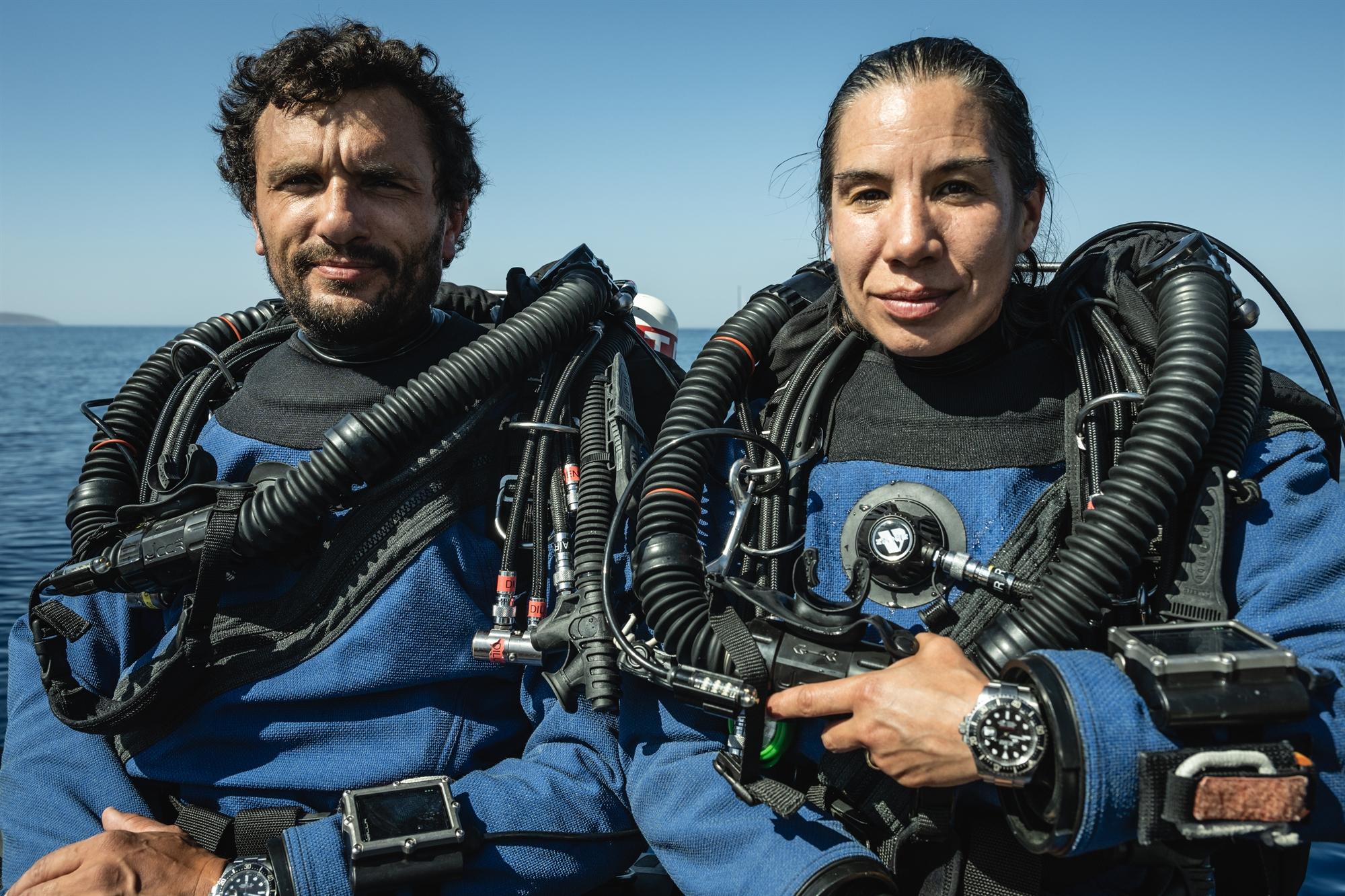
French and Greek researchers map underwater forests in the Fournoi
A recent study in the Aegean Sea reveals hidden biodiversity hotspots, especially vital in the age of climate change threatening marine ecosystems. These coral forests, located at mid-depths in dimly lit areas, have been documented for the first time by a collaboration between French and Greek researchers. The reefs serve as nurseries and habitats for various marine species, now endangered by warming waters and destructive fishing practices. Researchers emphasize the urgent need for their protection.
Mapping and Research
For a month, a specialized team from the French organization Under the Pole, with extensive experience in deep-sea dives globally, explored the Fournoi Archipelago. Eight divers, alongside professional photographers and filmmakers, conducted dives beyond 100 meters on reefs mapped by the Archipelagos Institute, guided by local fishermen. It marked the first exploration at such depths, using advanced technology.
Ecological Significance
The research focuses on the ecological function of coral marine forests, which resemble terrestrial forests in structure and ecological role. Dense populations form actual forests, creating favorable environments for many species, akin to terrestrial counterparts. Healthy, dense forests are biodiversity oases, according to Emmanuel Perier-Bardou, founder and director of Under the Pole, and Lorenzo Bramanti, scientific director of the DeepLife program.
Innovative Techniques
The French team’s pioneering methods, including high-resolution current meters, temperature and light sensors, hydrophones, and environmental DNA sampling, are expected to yield extensive data. Environmental DNA, or biological traces left by species, helps understand long-term biodiversity in the area, described as the “memory of water” by Archipelagos director Theodoros Tsimpidis.


Research Findings
The study illuminated the impact of climate change on coral habitats, examining areas in Trikeri, Pagasitikos Gulf, and Fournoi. In Trikeri, a shallow black coral forest was found, but signs of mass mortality in red gorgonians at shallower depths likely due to marine heatwaves were also observed. Deeper populations are currently safer but could be at risk from future heatwaves.
In Fournoi, a rich forest with various species, including red gorgonians and a small black coral forest at 100 meters depth, was discovered. Researchers noted a plateau at 80 meters inhabited by deep-water species.
Conservation Challenges
Despite the healthy forest, worrying signs like unexpected mortality and trawling evidence were found. Trawling, even indirectly, can harm the ecosystem’s health by causing sedimentation and turbidity. Fishing lines and nets further threaten these habitats.
Local Support
Fournoi’s mayor, Dimitris Karydis, expressed astonishment at the rich marine ecosystem revealed by the research, advocating for the protection against destructive fishing practices, including Turkish trawlers. The community supports a diving park and underwater archaeological research.
Fishermen’s Perspective
Local fisherman Michalis Manousakis emphasized the need for immediate conservation measures to prevent marine desertification, criticizing the non-enforcement of fishing regulations.
Research Recommendations
The Under the Pole team recommends including the mesophotic zone in marine spatial planning, banning trawling near marine forests, and creating marine protected areas or refuges.
Future Efforts
Archipelagos, collaborating with local communities and international institutions, has been mapping these habitats for three years. They highlight the need for urgent protection, suggesting the immediate ban on trawling in and near these areas. Fournoi could be the first protected region, turning conservation promises into reality.
Source: kathimerini.gr








